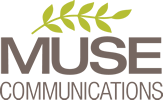What to Publish on Your LinkedIn Page: A Guide for Small and Mid-Size Law Firms
This post was originally published by The Texas Lawbook.
Having a LinkedIn page for your law firm is almost as necessary as having a website. However, unlike personal LinkedIn profiles, which act as dynamic online resumes, a LinkedIn company page is pretty blah if you’re not populating it regularly with news and information about your firm.
While large firms — with their hundreds of lawyers and hefty marketing departments — can churn out news on the regular, small and mid-size firms often struggle with keeping their LinkedIn pages populated. I’ve seen more than a few LinkedIn pages with nothing on them other than the firm’s name and, maybe, contact information. Those pages are making a terrible first impression on prospective clients and hires, as well as reporters looking for sources — all of whom have been known to consult LinkedIn for vetting purposes.
Need help turning your legal marketing to-do list into reality? We can help with that! Just drop us a line. Muse Communications was named one of Texas’ best legal public relations firms by the readers of Texas Lawyer.
Why Do LinkedIn Pages Matter?
Stats don’t lie: LinkedIn isn’t where you want to make a bad first impression. It holds substantial credibility as a source of legal, business, and industry news, with 65% of C-suite and 57% of in-house counsel considering it credible, according to Greentarget’s 2022 digital and content marketing survey. Traditional media (e.g., The Wall Street Journal, The New York Times, etc.) are 79% and 78%, respectively.
As anyone who’s tried to pitch a story to the Journal, the Times, or even specialty publications like The Texas Lawbook, can tell you, the barrier to entry for getting published in the traditional media is quite high, whereas the barrier to getting published on LinkedIn is virtually non-existent.
Compared to traditional media, the ROI on LinkedIn is unbeatable.
A law firm’s LinkedIn company page is not static; it’s a living representation of your firm’s brand. That’s why regular posting is key. (For what it’s worth, I don’t think it’s as important for individuals, as I explained in this article.) I recommend that firms post at least monthly, but ideally weekly. Every other week is a nice middle ground.
But what, you might be wondering, should you publish on your firm’s LinkedIn page?
Showcase News and Achievements
Begin with the low-hanging fruit: news and achievements.
Share significant developments such as verdicts, judgments, settlements, closings, or lawsuit filings. Any news that can be publicly announced should be published on your website and then shared on your LinkedIn page.
Additionally, take pride in lawyer and law firm awards like Chambers, Best Law Firms, Best Lawyers in America, and Super Lawyers. These accolades reinforce your firm’s reputation and expertise.
Other lawyer or law firm activities such as CLE presentations, leadership positions in bar groups, pro bono work (this includes general community volunteer work), and sponsorships are also worth promoting on LinkedIn.
Don’t forget to introduce new lawyers who join your team. Such announcements not only highlight your firm’s growth but also provide a personal touch, humanizing your brand in the eyes of your audience.
Your clients can also be good sources for your LinkedIn page. If, for example, your real estate developer client posts about a major closing you handled, you can share their post on your LinkedIn page, both congratulating them on the successful closing and sharing what an honor it was to represent them in the deal. Just to be safe, you should run the language by your client before you publish it. Your client will appreciate your amplifying their post, so it’s a win-win for everybody.
Even with all those possibilities, many small to mid-size firms may struggle to come up with enough news to maintain a steady flow of content. What can you share then?
Evergreen Content: Your LinkedIn Goldmine
Evergreen content is your secret weapon. Dive into your website’s treasure trove of information — all of which was likely endlessly vetted by every partner in the firm — and repurpose it for your LinkedIn page. Consider these ideas:
General branding posts: Highlight your firm’s unique selling points, its values, and the qualities that set you apart in the legal marketplace. This is a great place to promote that tagline your partners spent their last retreat brainstorming.
Practice area promotions: Dedicate posts to each of your practice areas, diving into the specifics and showcasing your expertise. Remind your audience why you excel in these areas.
Recruiting posts: Attract potential talent by sharing what makes your firm an excellent place to work. Talk about your firm’s culture, values, and opportunities for growth.
Subscribe to your firm’s newsletter: If you have a newsletter (and you should), share the “subscribe” link. Most email service providers, like MailChimp, can generate this link for you. Regularly inviting your LinkedIn audience to stay updated through your newsletter helps expand your network.
Meet the team: Feature profiles of your lawyers and staff. Humanize your firm by showcasing the faces and stories behind the legal expertise. This approach fosters a stronger connection with your audience.
Client testimonials: If you have a collection of nice things your clients (or even ranking agencies) have said about you, share those on LinkedIn.
Client successes: Showcase all the good work you’ve already done. You may have to anonymize the results, but nothing shows your expertise like past success.
Don’t Forget the Graphics
Each post should be accompanied by a graphic to catch your audience’s eye. Engage a graphic designer to create professional visuals, or try your hand at DIY designs on user-friendly platforms like Canva.com. A well-designed graphic can transform a post from ordinary to eye-catching and shareable, enhancing your law firm’s online presence.
Keeping Track
To keep up with all those evergreen posts, we store them in a spreadsheet and create a flexible calendar for the year. It’s not written in stone because you never know when you’re going to win a major case or close a major deal, and those take precedence over your evergreen posts. But it’s nice to have a catalog of timeless social media posts you can publish whenever you don’t have breaking news to share.
Grow Your Followers (But Don’t Stress About It)
LinkedIn allows admins on company pages to invite followers, and we encourage our clients to send those invitations regularly to grow their follower base. However, I also counsel them not to focus all their energies on getting followers.
First, LinkedIn doesn’t reliably promote page posts to all your followers. That may be because most posts from company pages are purely promotional and not likely to generate the kind of engagement LinkedIn is looking to generate on its platform. Plus, they would prefer that pages pay to promote those posts.
Second, and not to put too fine a point on it, but how many small to mid-size law firms do you follow on LinkedIn? Probably not too many. Law firms aren’t an inherently interesting sector on social media. No offense.
Still, you would like to get some eyes on your posts, right?
Engage Your Ambassadors
The best way to amplify your posts (without paying for it) is to ask your lawyers and staff to like/share/comment on them on their personal profiles.
Think about it: your law firm probably has a few hundred, maybe a few thousand, followers. But your individual lawyers and staff members each likely have several hundred connections. If even six people at your firm like/share/comment on your post, it’s potentially getting in front of far more eyes than if it were served up to every one of your followers via the company page alone.
That’s why whenever we post something significant on a client’s LinkedIn page, we follow up with a memo to the firm providing a link to the post and encouraging attorneys and staff to engage with it on their own profiles. Obviously, you can’t require them to do that, but you can ask nicely.
Engagement Matters, But It’s Not Everything
Even if you don’t get lots of engagement on your social media posts, you should continue to publish regularly on your law firm’s LinkedIn page. That’s because many prospective clients, hires, and reporters will check your firm’s LinkedIn presence as part of their vetting. You want them to see a diversity of informative, compelling posts that showcase what’s best about your firm.
Remember, LinkedIn isn’t just a platform for promotion; it’s an opportunity to humanize your brand, connect with your audience, and establish credibility in the legal landscape. By regularly publishing informative and visually appealing content, engaging your firm’s ambassadors, and understanding that follower count isn’t everything, you can make your LinkedIn company page a dynamic reflection of your firm’s values, expertise, and success.
Amy Boardman Hunt is all about helping lawyers find their voice and showcase their expertise. When she’s not doing that, she’s trying to find great hiking spots in Dallas. If you know of any – or you need a legal marketing muse – drop her a line at amy.hunt@muselegalpr.com.


